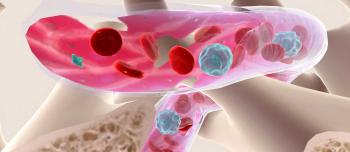Inspiration Biopharmaceuticals, Inc. (Inspiration) recently presented data from its clinical development program for OBI-1, an intravenous recombinant porcine (pig) factor VIII product (rpFVIII). In January 2010, Inspiration and the pharmaceutical company Ipsen entered into a partnership to combine their expertise and technologies to develop new recombinant factor products. Under the terms of the agreement, Inspiration “in-licensed” OBI-1 from Ipsen, and is responsible for the clinical development, regulatory approval and commercialization of the product.
The data were presented at a Scientific Session held in conjunction with the 23rd Congress of the International Society on Thrombosis and Haemostasis, held in Kyoto, Japan, on July 23-29, 2011. The session was chaired by Amy Shapiro, MD, Co-Medical Director at the Indiana Hemophilia & Thrombosis Center (IHTC) in Indianapolis.
rpFVIII is intended for the treatment of bleeding in people with hemophilia A with inhibitors and in people with acquired hemophilia. Inhibitors are antibodies that develop in approximately 25% of patients. They neutralize the infused factor product. Acquired hemophilia is a rare, life-threatening condition that occurs in adults who develop inhibitors to clotting factor. Bleeds typically occur in the skin, muscles and soft tissue, rather than the joints.
Anne Greist, MD, Co-Medical Director at IHTC, presented interim results from the first registration study in the OBI-1 Accur8 clinical trial program. Three patients with acquired hemophilia, who had experienced severe bleeds not controlled with bypassing agents, were treated with OBI-1. The drug successfully stopped their bleeds. Additional study data on hemostatic efficacy (the ability to stop bleeding) and safety are being collected as part of the Accur8 program.
A Phase 2 study of patients with hemophilia and inhibitors showed that the treatment controlled their bleeding, even in those with high titers. All 25 bleeds were controlled, 80% of which required two infusions.
“OBI-1 represents a potential alternative treatment, which allows established laboratory parameters to guide dosing and monitor efficacy, in addition to clinical outcome. I am happy to report the progress that has been seen in this development program,” explained Greist during the session.
Source: Reuters, July 28, 2011





